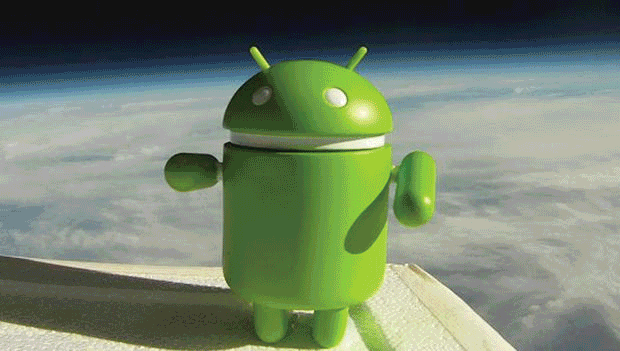|
Android is going to space. Smartphones have
previously been part of NASA shuttle missions as productivity tools and
for experimentation. This time, however, an Android smartphone will,
itself, be the core of the satellite.
With the STRaND-1 project, British company Surrey Satellite Technology
Ltd. hopes to launch a smartphone satellite into orbit. Given
smartphones’ computing and data capabilities, engineers say they can
easily be turned into space-bound data-gathering tools. “Apart from
solar panels, this thing pretty much is a satellite,” says engineer
Chris Bridges, who says smartphones have almost everything needed,
including cameras, magnetometers and communications equipment.
It helps that these pocketable devices have “the same computing
capability as a supercomputer did in the 1970s,” says Shaun Kenyon,
another engineer developing the smartphone satellite. As an added
benefit, mobile phones are known to withstand extreme conditions,
including being left on a car dashboard under the hot sun, or still
being operational despite the cold of winter. Developers said they have
tried subjecting an Android phone to a vacuum chamber, oven and freezer
with no adverse effects.
|
|
 |
|
Beyond global roaming
STRaND stands for “Surrey Training Research and Nanosatellite
Demonstration,” which is apt for how project engineers want to utilize
smartphones to prove their capability in space orbit. While STRaND-1 is
itself still in pieces, the team is continually building upon the
project. The satellite itself measures 11 inches and will have a hole
cut out to accommodate the smartphone’s camera. Once launched into
orbit, STRaND-1 will take “postcards from space” with the various
onboard apps.
STRaND-1 will also test the smartphone’s other systems in space,
including its Wi-Fi, magnetometer and microphone. In particular, the
developers want to help reduce the weight of satellites by using
wireless communication instead of wires. Strand-1 will help test this
hypothesis.
Unlike government projects, though, STRaND-1 is a private undertaking,
and will be bankrolled by contributions from developers and other
financing sources. Surrey is mum about details, however.
|
|

|
|
Smartphones in space
Surrey is not alone, though, as a U.S.-based project, called PhoneSat,
is also part of the race to launch a smartphone into orbit as
satellites. Another project is KickSat, which plans to release “sprite”
satellites into space. These are tiny postage-size satellites designed
to get data-gathering tools into space at the fraction of the cost of
million-dollar satellites.
These projects are mostly independent efforts. Volunteers contribute
their time, skills and efforts to STRaND-1. KickSat is run by Zac
Manchester, a student from Cornell University New York. PhoneSat,
however, is sponsored by NASA. Still, Surrey plans to launch ahead of
PhoneSat’s early 2013 foray into space.
|
|

|
|
Smartphones have likewise been launched high up in the atmosphere with
balloons before. Phones have also piggybacked on space-bound rockets.
The STRaND-1 effort is quite ambitious, though, as it plans to actually
use the smartphone to run a satellite. This just illustrates how far
mobile phone technology has come. Perhaps one day we will be able to use
the same cellular technology to communicate with people in orbit, the
moon or even some other planet.
Of course the issue will be the cost. “[R]oaming charges from space are
a bit high,” Surrey’s Kenyon says in jest. |